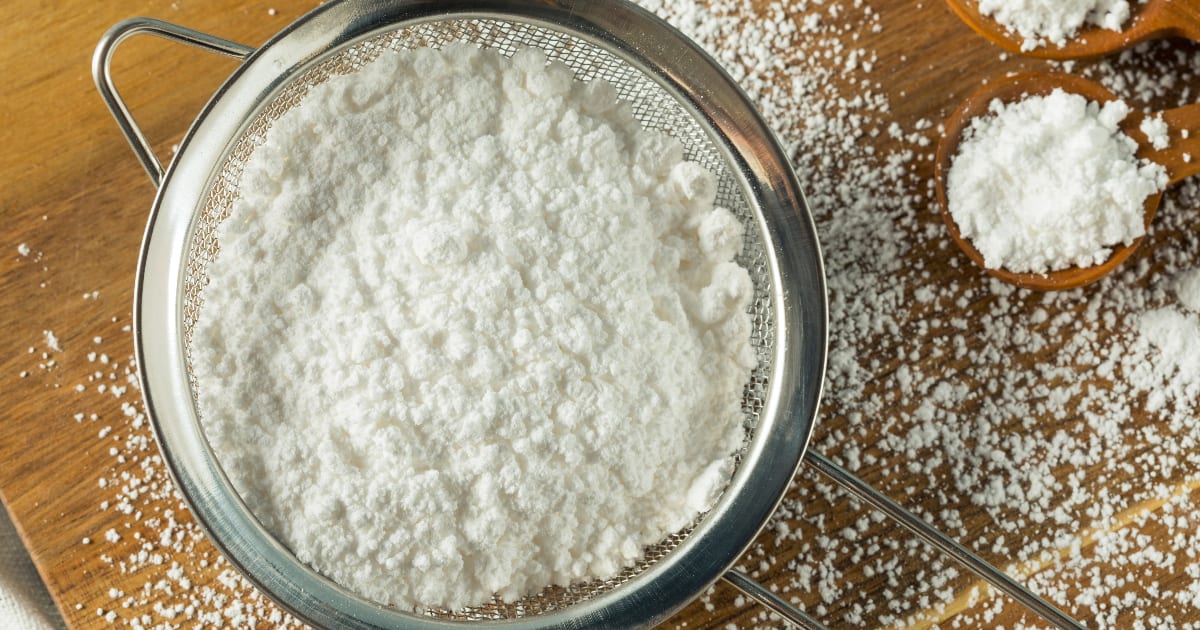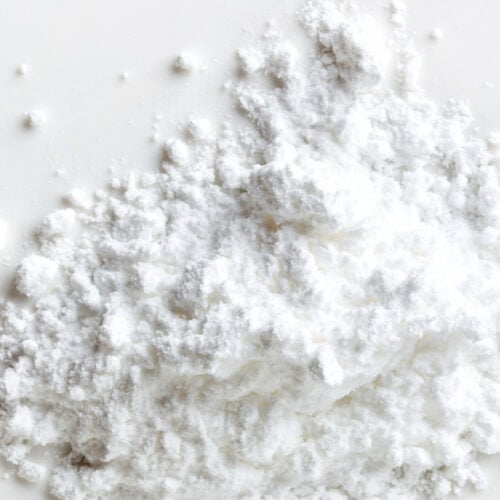Making homemade powdered sugar is an easy kitchen project that can save you time and money.

With just two ingredients - granulated sugar and cornstarch - you can make a powdered sugar that's just as good as what you buy at the store.
What Is Powdered Sugar?
Powdered sugar, also known as confectioners' sugar or icing sugar, is a finely ground sugar with a light and fluffy texture. It dissolves instantly and has a smooth, silky mouthfeel. The fineness of powdered sugar allows it to efficiently mix into frostings, glazes, and other dessert recipes without detectable granules.
Powdered sugar contains about 3% cornstarch, which is added as an anti-caking agent. The cornstarch absorbs moisture and prevents the sugar from clumping together. Commercial powdered sugar is typically made by grinding granulated sugar into a fine powder and then mixing in the cornstarch.
Powdered sugar is great for sweetening and smoothing out creamy dessert recipes. It also provides a beautiful dusting over cakes, cookies, and pastries. Common uses for powdered sugar include:
- Frostings and icings
- Glazes
- Whipped cream
- Dusting on baked goods
Key Takeaway: Powdered sugar is a silky smooth, fine sugar used to sweeten and smooth out creamy desserts. It also gives a pretty dusted effect on cakes and pastries.
Equipment Needed to Make Powdered Sugar
Making powdered sugar is a simple process, but you'll need the right equipment to get that ultra-fine, powdery texture. Any of the following appliances will work:
- Food processor - A food processor with sharp metal blades makes quick work of turning granules into powder.
- Blender - A high-powered blender like a Vitamix, Ninja, or Magic Bullet can grind sugar into a light powder.
- Coffee grinder - A blade-style coffee grinder is ideal for small batches of powdered sugar.
- Mortar and pestle - For a hands-on approach, a mortar and pestle can pulverize the sugar crystals. It just takes longer.
- Sifter - A fine mesh sifter helps remove any clumps after grinding.
For large batches, a food processor or high-power blender will grind sugar the fastest. But for a small amount, a coffee grinder or mortar and pestle gets the job done. Any kitchen with the above tools on hand can make powdered sugar!
Key Takeaway: Food processors, blenders, coffee grinders and mortar and pestles can all grind sugar into powdered sugar. Sifters help remove clumps.
How to Make Powdered Sugar

Powdered Sugar Recipe
Ingredients
- 1 cup granulated sugar
- 1 tablespoon cornstarch (optional) The cornstarch is optional, but it helps the powdered sugar stay smooth and clump-free when stored.
Instructions
- Add the granulated sugar to a food processor, blender, coffee grinder or mortar.
- Process on high speed until it becomes a fine, fluffy powder. This takes 1-2 minutes in a food processor or blender, or 5+ minutes with a mortar and pestle.
- If using cornstarch, pulse it in until evenly distributed in the sugar.
- Sift the powdered sugar through a fine mesh sieve to remove any clumps.
- Store in an airtight container. Keeps indefinitely!
Be sure to stop blending periodically and check that the sugar is ground to a super fine powder. There should be no grittiness at all when you rub it between your fingers. The powdered texture may be easier to feel by comparison if you also touch a bit of granulated sugar.
If any clumps remain, break them up and continue grinding. The end result should have a consistently light and powdery texture.
Key Takeaway: Grind granulated sugar on high speed until fluffy and powdery. Optional cornstarch helps prevent clumping during storage.
Tips for Making Powdered Sugar
- Use regular granulated cane sugar. Don't use brown sugar.
- Add only 1 tablespoon of cornstarch per 1 cup of sugar. Too much cornstarch can change the texture.
- Work in small batches if needed to prevent overheating your appliance.
- Let the powdered sugar settle before removing the lid from your blender or coffee grinder. This prevents a huge poof of sugar!
- Make ahead and store in an airtight container in a cool, dry place.
Why Make Homemade Powdered Sugar?
Cooking and baking with homemade powdered sugar offers several benefits:
Saves money - Making your own powdered sugar is far cheaper than buying bags from the grocery store. Just pennies worth of sugar makes cups worth of powdered sugar.
Customize texture - You can grind to your preferred fineness. Store bought versions have varying textures, which changes how smoothly it incorporates.
Avoid additives - Commercial brands include 3% cornstarch as an anti-caking agent. Your homemade version can be just pure sugar.
Use alternative sugars - You can make powdered sugar with less refined options like coconut sugar, turbinado sugar, and organic cane sugar.
Precise portions - No need to open and measure from a big bag when a recipe calls for just a tablespoon or two. Make just what you need.
Long shelf life - Homemade powdered sugar stores indefinitely in an airtight container. It retains quality much longer than an open package from the store.
Fun project - It's a neat kitchen experiment for kids and adults alike!
For occasional baking, homemade powdered sugar adds convenience, quality, and cost savings to your kitchen. The next time a recipe calls for powdered sugar, try grinding your own!
Frequently Asked Questions
Can I make powdered sugar without cornstarch?
Yes, you can absolutely make powdered sugar without any cornstarch. The sugar will still grind up fluffy and fine. However, cornstarch does help prevent clumping during long term storage. If omitting it, plan to use the powdered sugar right away.
Does powdered sugar go bad?
Homemade powdered sugar can last 1-2 years stored properly in an airtight container in a cool, dry place. Over time, it may clump together as moisture is absorbed. But it does not actually expire or go bad.
Why is my powdered sugar lumpy?
Lumps can form if the initial granulated sugar is not ground finely enough. Also, humidity and condensation over time can cause clumping. Sift your powdered sugar through a fine mesh strainer before use to break up any lumps. For storage, keep in an airtight container in a cool, dry area.
Can I use brown sugar?
Brown sugar is not recommended. The molasses in brown sugar makes it dense and prone to clumping. For best results, stick to white granulated cane sugar or other dry white sugars.
Can I flavor powdered sugar?
Yes, you can add flavorings or spices to powdered sugar. Fold in a teaspoon of vanilla or almond extract per cup of powdered sugar. Cocoa powder, cinnamon, nutmeg, and citrus zest also add tasty flavors. Get creative with blending in your favorite flavors!
Conclusion
Whipping up homemade powdered sugar is an easy kitchen project. All it takes is some granulated sugar and a spice grinder, blender, food processor, or mortar and pestle.
The fineness of powdered sugar gives it some unique properties. It dissolves instantly, provides a smooth mouthfeel, and helps remove grit from creamy desserts. Powdered sugar also beautifully dusts cakes and pastries.
Make your own powdered sugar to save money, control textures, customize flavors, and avoid additives. Just a couple minutes makes all you need for recipes like frostings, glazes, whipped cream, and dusting desserts. Give it a try the next time a recipe calls for this sweet staple!

